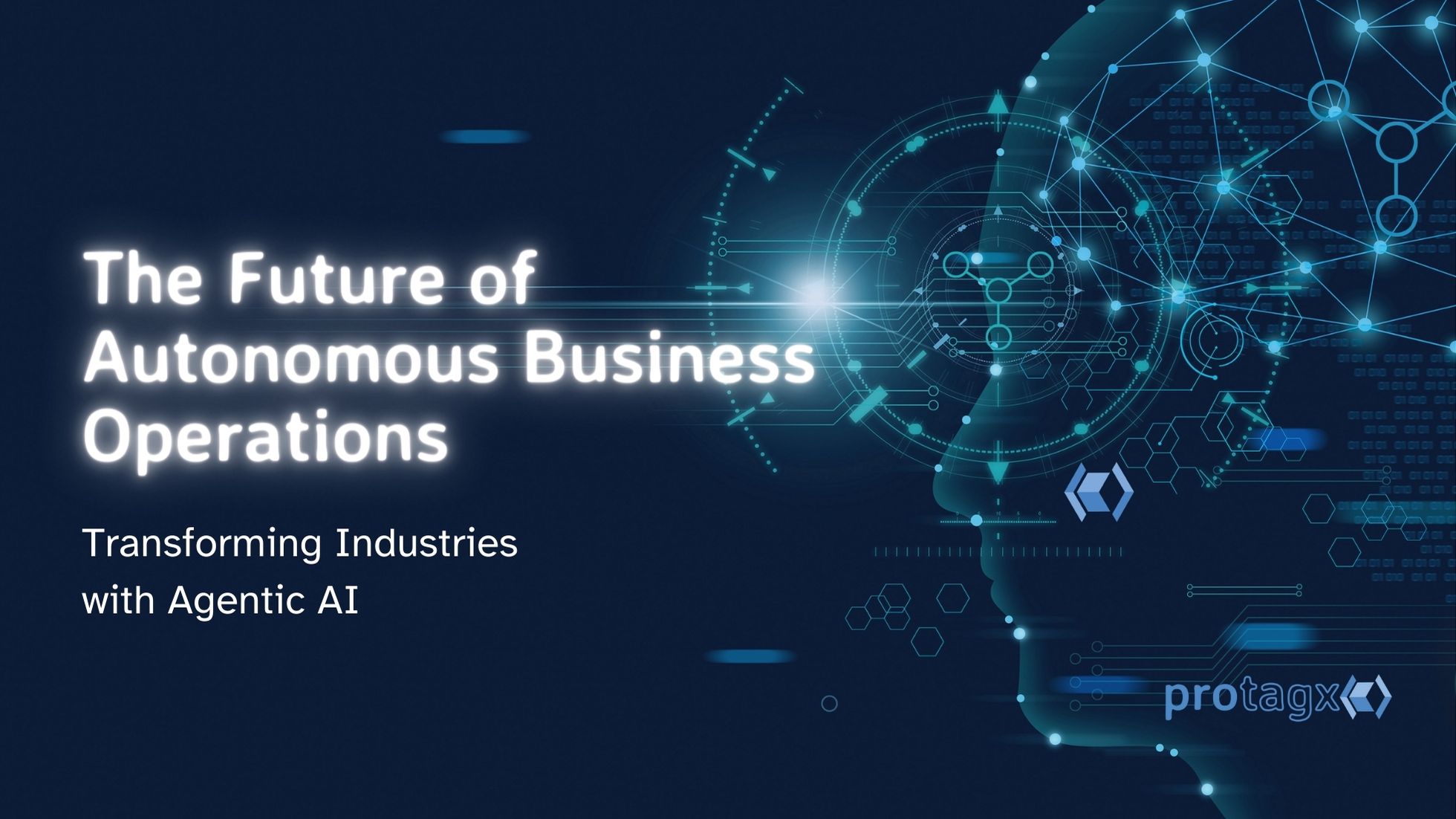Effective patient communication is a cornerstone of quality healthcare. In an era where timely and accurate communication can significantly impact patient outcomes, leveraging advanced AI technologies like GPT-4-turbo is not just innovative—it's essential. At protagx, we understand the critical role that seamless communication plays in healthcare, and our solutions are designed to enhance this aspect, ensuring better patient engagement and streamlined processes. This blog will delve into how our GPT-4-turbo powered solutions can revolutionize patient communication, particularly in scheduling follow-up appointments, and highlight the benefits, implementation strategies, and compliance measures involved.
Understanding the Need for Patient Engagement
The Importance of Follow-Up Appointments
Follow-up appointments are crucial for several reasons:
-
Continuity of Care: Ensuring that treatment plans are followed and adjusted as necessary.
-
Early Detection: Identifying potential complications or new health issues early.
-
Patient Engagement: Keeping patients informed and involved in their own care.
Despite their importance, scheduling follow-up appointments can be a logistical challenge. Traditional methods often involve time-consuming phone calls, manual record-keeping, and a high risk of miscommunication. This is where protagx's AI-driven solutions come into play.
The Challenges in Current Systems
Current patient communication systems often fall short due to:
-
Inefficiency: Manual scheduling is slow and prone to errors.
-
Lack of Personalization: Generic messages fail to address specific patient needs.
-
Compliance Issues: Handling sensitive patient data requires strict adherence to regulations like HIPAA.
Leveraging GPT-4-turbo for Patient Engagement
protagx's innovative approach integrates GPT-4-turbo, a powerful AI model known for its contextual understanding and conversational capabilities, to address these challenges head-on.
Benefits of GPT-4-turbo
Contextual Understanding
GPT-4-turbo excels at interpreting the nuances of patient interactions:
-
Patient-Specific Needs: It can understand and respond to individual patient concerns based on the outcomes of initial consultations.
-
Detailed Responses: Generates responses that are not only accurate but also tailored to the specific context of the conversation.
Conversational Ability
The model's ability to engage in human-like dialogues is a game-changer:
-
Natural Interactions: Maintains a coherent flow of conversation, making the interaction feel natural and engaging.
-
Empathetic Tone: Can be fine-tuned to exhibit empathy and professionalism, enhancing patient satisfaction.
Customization
protagx ensures that the AI is fine-tuned for the healthcare context:
-
Medical Terminology: Incorporates relevant medical terms to ensure accurate communication.
-
Compliance: Adheres to privacy regulations, ensuring that patient data is handled securely.
Implementation Strategies for GPT-4-turbo
Step 1: Define Use Case and Conversation Flows
To effectively implement GPT-4-turbo, it's essential to start by clearly defining the use cases and conversation flows:
-
Scenarios: Outline various scenarios such as appointment reminders, follow-up scheduling, and handling patient inquiries.
-
Conversation Mapping: Create detailed conversation flows that guide the AI in managing different patient interactions.
Step 2: Fine-Tuning the Model
Fine-tuning GPT-4-turbo involves:
-
Dataset Preparation: Using datasets that include examples of patient interactions, medical conversations, and appointment scheduling.
-
Continuous Improvement: Regularly updating the model based on feedback to enhance its performance and relevance.
Step 3: Integration with Existing Systems
protagx ensures seamless integration of GPT-4-turbo with existing patient management systems:
-
API Integration: Utilizing GPT-4-turbo's API to connect with telephony systems and CRMs like HubSpot.
-
System Compatibility: Ensuring that the AI can interact with other systems securely and efficiently.
Step 4: Testing and Feedback
Thorough testing is critical to the success of the implementation:
-
Model Validation: Testing the AI's responses to ensure they are accurate and appropriate.
-
Patient Feedback: Collecting feedback from patients to refine and improve the system.
Enhancing Telephony and Messaging Integration
Voice Call Handling
Integrating GPT-4-turbo with telephony systems enhances voice call handling:
-
Cloud Telephony Providers: Using platforms like Twilio, Vonage, or Plivo for managing calls.
-
Speech-to-Text and Text-to-Speech: Implementing services such as Google Cloud Speech-to-Text for real-time voice recognition and response.
WhatsApp Call Handling
For WhatsApp interactions, protagx employs:
-
WhatsApp Business API: Managing calls and messages through the API.
-
Webhook Integration: Setting up webhooks to handle incoming messages and calls, triggering appropriate responses from GPT-4-turbo.
Integrating with your favorite CRM
API Integration
To manage patient interactions efficiently, protagx integrates GPT-4-turbo with e.g. HubSpot CRM:
-
HubSpot API: Logging interactions, updating records, and tracking communication history.
-
Automation Workflows: Creating workflows to handle follow-up actions based on call outcomes, using triggers and actions within HubSpot.
Data Sync
Ensuring data synchronization between systems is crucial:
-
Two-Way Sync: Keeping data updated across telephony, messaging systems, and HubSpot.
-
Custom Properties: Defining custom properties in HubSpot to store specific data from interactions, which helps personalize future communications.
Ensuring Compliance and Security
HIPAA Compliance
protagx places a strong emphasis on compliance:
-
Data Encryption: Implementing end-to-end encryption for data transmissions and encrypted storage for patient data.
-
Access Controls: Utilizing role-based access controls and maintaining audit logs to monitor data access and modifications.
-
De-identification: Anonymizing patient data where possible to protect privacy.
-
HIPAA Training: Ensuring that staff are trained in HIPAA compliance and regularly updated on regulatory changes.
Incorporating Medical Terminology
Accurate communication requires the correct use of medical terminology:
-
Model Training: Fine-tuning the model with datasets that include medical terminology.
-
Template Creation: Developing standard response templates that incorporate medical terms.
-
Glossary Integration: Integrating a medical glossary to ensure correct usage of terms and handle synonyms effectively.
Case Study: Implementing a Conversational AI System Using GPT-4-turbo
To illustrate the effectiveness of our solution, let's consider a detailed case study of implementing a conversational AI system using GPT-4-turbo in a healthcare setting.
Overview
This project aimed to develop an AI system capable of handling voice and text interactions for patient communication and appointment scheduling, integrated with HubSpot CRM to manage patient interactions and ensure HIPAA compliance.
Project Scope
The scope of the project included:
-
Developing Conversational AI: Creating an AI system to manage patient interactions.
-
Integrating Telephony and Messaging: Using platforms like Twilio and WhatsApp Business API.
-
Connecting with HubSpot CRM: Ensuring seamless data synchronization and workflow automation.
-
Ensuring Compliance: Adhering to HIPAA and other relevant regulations.
Implementation Steps
Step 1: Set Up Telephony and Messaging Services
Platform Selection: Choosing Twilio for handling phone calls and WhatsApp Business API for managing WhatsApp interactions.
Configuration:
-
Setting up Twilio account and configuring phone numbers for incoming and outgoing calls.
-
Integrating Twilio Voice API and WhatsApp API for message handling.
-
Implementing Google Cloud Speech-to-Text and Text-to-Speech for real-time voice interactions.
-
Configuring webhooks to trigger serverless functions for incoming messages and calls.
Step 2: Integrate with HubSpot CRM
API Authentication:
-
Generating API keys and configuring OAuth for secure access to HubSpot.
-
Setting up API endpoints for data interaction between HubSpot and the AI system.
Data Synchronization:
-
Developing scripts to sync call logs, messages, and patient interactions with HubSpot.
-
Using middleware solutions like Zapier or custom serverless functions for integration if necessary.
-
Defining custom properties in HubSpot to store specific patient data.
-
Creating automation workflows for follow-up actions based on call outcomes.
Step 3: Develop AI Capabilities
Fine-Tuning GPT-4-turbo:
-
Preparing datasets of medical conversations, appointment scheduling scenarios, and patient interactions.
-
Fine-tuning GPT-4-turbo using these datasets.
-
Evaluating the model’s performance and making necessary adjustments.
Response Generation:
-
Developing scripts and templates for common responses using medical terminology.
-
Implementing context management to maintain conversation continuity.
Step 4: Ensure Compliance and Security
HIPAA Compliance:
-
Implementing end-to-end encryption for data in transit and at rest using industry-standard protocols.
-
Utilizing role-based access controls and maintaining audit logs.
-
Anonymizing patient data where possible.
-
Ensuring informed consent for data usage.
Regular Audits and Training:
-
Conducting regular audits to ensure adherence to HIPAA regulations.
-
Using third-party assessments for unbiased compliance reviews.
-
Training staff on HIPAA compliance and data handling best practices.
-
Providing regular updates on regulatory changes.
Implementation Timeline
Month 1-2:
-
Set up telephony and messaging services.
-
Configure speech-to-text and text-to-speech integration.
-
Initial HubSpot API integration and data synchronization.
Month 3-4:
-
Fine-tune GPT-4-turbo and evaluate performance.
-
Develop and test IVR flows.
-
Implement dynamic response generation and context management.
Month 5-6:
-
Full integration with HubSpot CRM.
-
Ensure HIPAA compliance and security measures.
-
Conduct comprehensive testing and user training.
Month 7:
-
Launch the system.
-
Monitor performance and gather user feedback.
-
Make necessary adjustments based on feedback and compliance audits.
Necessary Decisions and Options
Telephony and Messaging Providers:
-
Options: Twilio, Vonage, Plivo for telephony; WhatsApp Business API for messaging.
-
Decision: Choose based on feature set, cost, and ease of integration.
Speech Recognition and Synthesis:
-
Options: Google Cloud, Amazon, Microsoft Azure.
-
Decision: Select based on accuracy, latency, and cost.
Integration Middleware:
-
Options: Zapier, Integromat, custom serverless functions.
-
Decision: Choose based on complexity and integration requirements.
Compliance Measures:
-
Options: Various encryption standards, third-party audit services.
-
Decision: Implement best practices and select reliable audit partners.
Conclusion
By implementing GPT-4-turbo for patient communication in healthcare, a revolutionary approach is taken to enhance efficiency, personalization, and compliance. Protagx's comprehensive solution utilizes the advanced capabilities of GPT-4-turbo to transform patient interactions, especially in the scheduling of follow-up appointments. Following the detailed implementation steps and ensuring strict adherence to privacy regulations, healthcare providers can greatly enhance patient satisfaction and streamline communication processes. Protagx is dedicated to delivering innovative solutions that cater to the evolving needs of the healthcare industry, prioritizing patient care in all our endeavors..




